To celebrate the International Dark Skies Week, Astronomer Gary Fildes from Grassholme Observatory, shares with us his top things to look out for in the springtime sky, when the nights start to get warmer and shorter in duration...
Has there ever been a pastime more thought provoking and thoroughly mesmerising than astronomy and stargazing? Seemingly, all you need is a good dose of enthusiasm and dark starry skies. Well here in Durham we have just the location from where you can let your eyes drift up into the inky black skies, over the UK's newest public observatory.
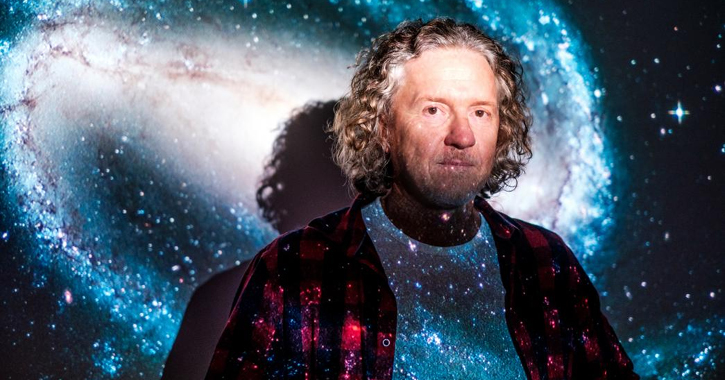
Grassholme Observatory opened amid the pandemic and stuttered to fulfil its vast potential. But under the stewardship of seasoned astronomer Gary Fildes, things are about to get cosmological.
Perfectly positioned to enjoy accessibility and superb dark skies from the banks of the Grassholme Reservoir, in the Durham Dales. On a clear moonless night, you can stare into the vastness of the universe and see star clusters planets and the elusive Milky Way, in all of its glory, as it snakes towards the horizon.
Telescopes
You would be forgiven for thinking that you need to buy the most expensive telescope out there to have any chance of looking into the night sky and actually being able to see anything. Well, that couldn’t be farther from the truth – I mean it helps right? But it’s not essential.
Let me explain – telescopes are cool, I mean they are really cool but why do we need them in the first place? Well can you recall your biology class at school, where you had your first chance to peer into the structure of the human eye? - all the budding biologists will be very familiar with the construction of our eyes – but the most important bit (I think) is the pupil, you know the little black circle in the centre of your eye.
.jpg)
If so, you will also be familiar with what happens to it when you look at something bright – it gets smaller and in dark conditions it gets bigger…right? Well, that being so, why does it do that? It appears that our eyes have evolved to realise that light is a ‘thing’. I mean light has properties, meaning that in bright conditions your pupil gets smaller and so restricts the amount of light it lets in and vice versa under dark conditions.
Well telescopes work in similar ways and their pupil is called ‘aperture’. A 4” aperture telescope will let in more light, than say a 2” aperture telescope, and celestial objects emit light. So the more light you can collect the better your resolution, meaning the bigger your aperture the more you see. Which is why in research, scientists use close to 20M class instruments and they are even building the EELT or the European Extremely Large Telescope which has a staggering 39m aperture…gotta collect those photons!
Getting back to our eye’s – well a typical human eye may have a pupil diameter of say 4 -7mm, that’s not a lot – and its why all we see on a clear moonless night is stars, you will never see grand spiral galaxies or gas clouds with the naked eye, right? All down to aperture – enter a telescope, which gathers light on its surface (aperture) and focusses all of that light through the pupil of your eye and voila!
So, we turn our paltry 5mm aperture eyes into maybe a 14” aperture eye…with a lot of help from the telescope. The image below shows me next to our 14” scope at the observatory….so if you want to transform your observing, you know where to come!
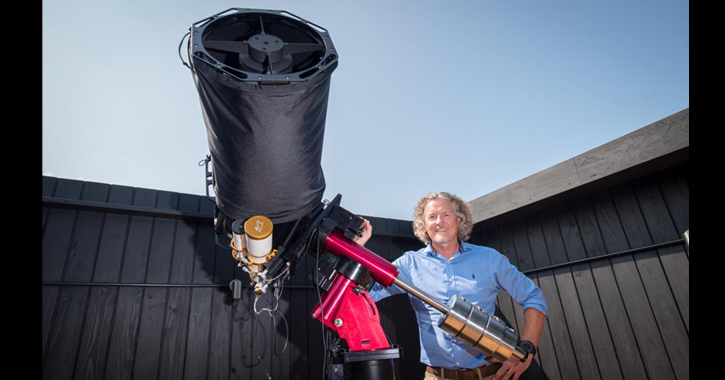
The Moon
Often overlooked but never forgotten, our Moon is the closest celestial neighbour we have and turning your eyes to this splendid object will never disappoint. Clearly visible are the grey areas and the lighter mountainous regions.
The grey Maria or seas are flat dried up lava plains over 3.5 billion years old and it’s here where the Apollo landers touched down firstly in 1969. See if you can find the seas with your naked eyes. You should also be able to resolve craters on the surface from ancient impacts that act like a fossilised record of the geology of the Moon.
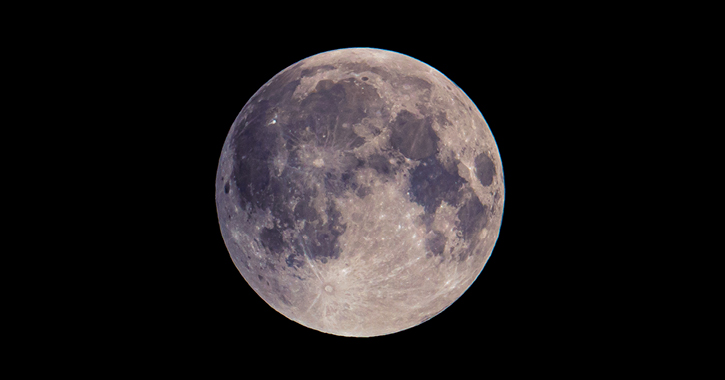
The phases of the moon are little understood amongst most people, apart from astronomers. Which is why at the observatory we have our popular Moon Night running every month. Follow this link to get a low down on how the phases work and why you need to know.
Be aware that if you love the dark clear nights with the Milky Way high overhead then you need to know your lunar phases, as a full moon will wash out all but the brightest stars – more on that in the links above.
The Pleiades
Also known as the Seven Sisters beautiful cluster of stars seen in the winter skies and easily recognisable. The cluster is around 100 million years old making it around 1/50th the age of our Sun.
The image below shows the Seven Sisters star cluster captured by Grassholme Observatory's telescope. From this image you should be able to resolve some reflection nebulae (dust grains) that surround these new young hot stars appearing as a blue mist.
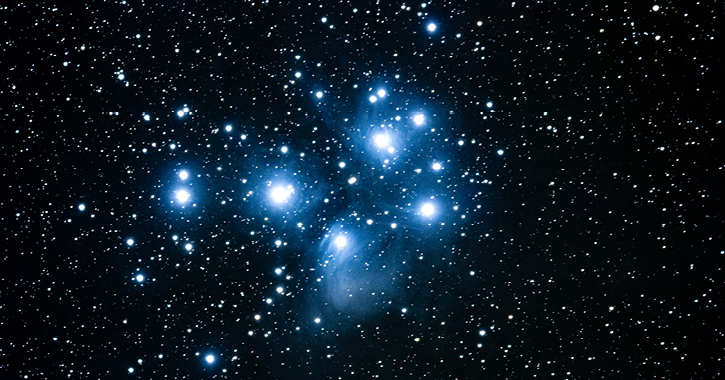
It's thought that our Sun formed in a similar way, but over the 5-6 billion years since, our sun has drifted away. The stars should have very bluey-coloured hues to them, this is a direct effect of the high surface temperature of the stars – the bluer the light the hotter they are.
Astronomers believe they will stay as a cluster for around another 200 million years until they drift apart, as the gravitational influence of the surrounding universe has its way. The current distance is around 440 Million light years.
Orion the Hunter
The best constellation of all, well to me it is. Always the first constellation to be taught to budding young astronomers as it’s so big and easily recognisable. Rising in late summer, early autumn, this giant constellation houses some of the greatest deep sky treasures to marvel at.
The enigmatic Betelgeuse, whose fluctuating periods of brightness have given rise to all sorts of ideas about the causes, has an orange light that is unmistakable. The Blue giant star Rigel, which sits as the bottom right corner star of this constellation, has a deep diamond blue hue – I wrote a lot about this star in my book as it’s so beautiful and bright.
Then of course is the well-known M42 or the Great Orion Nebula – a star forming region lying 1400 light years away. A stellar nursery where new solar systems are forming as we look – and look we do; the Hubble space telescope has peered into this system for years, as have amateur astronomers the world over.
Try to use your binoculars or even the naked eye to peer into this system before its sets into the western twilight in late April early May. The nebula is easy to locate as it is so bright, don’t expect however torchlight bright, more a subtle hue. As far as celestial objects go though, it’s pretty bright. Locate it by observing the 3 belt stars and just underneath is a vertical line of 3 fuzzy objects, try the middle one – Enjoy!
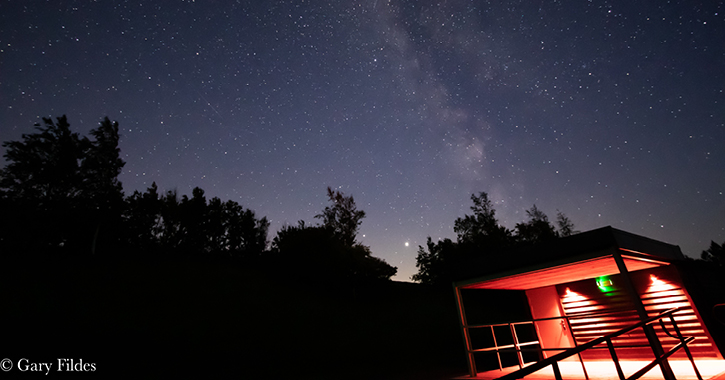
I hope this has whetted your appetite for more astronomy, so much so that you will venture outside to look up into this awe-inspiring universe and observe these far away treasures.
You can of course just come along to one of Grassholme Observatory's many family-friendly sessions and join in the stargazing fun. Till then, live long and prosper!
Related
Comments
Comments are disabled for this post.



 to add an item to your Itinerary basket.
to add an item to your Itinerary basket.
.png)






